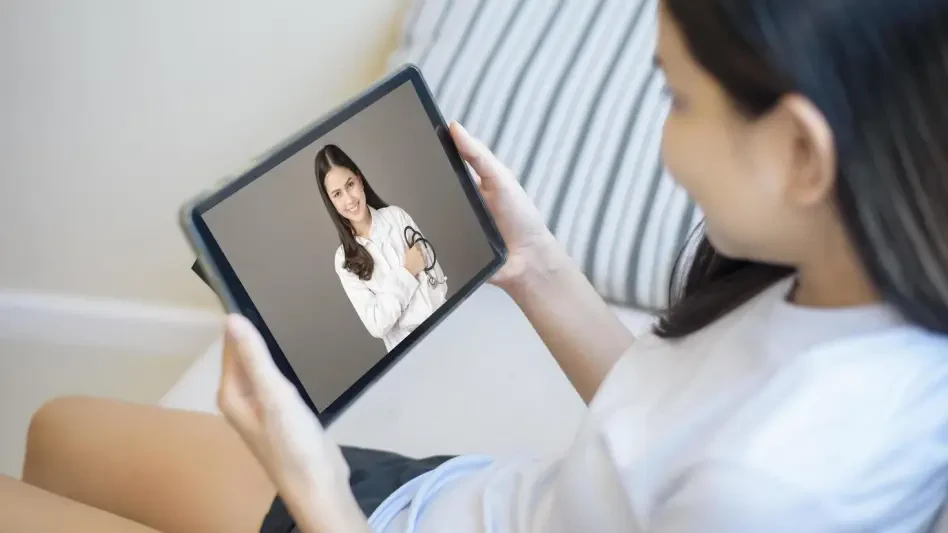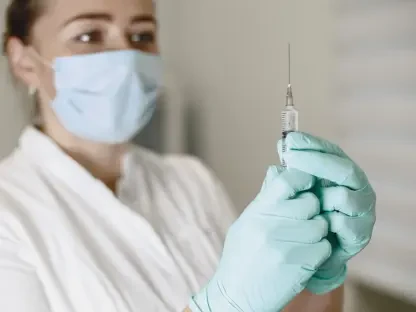Faisal Zain, a pioneer in the realm of medical technology, brings a wealth of experience in transforming healthcare through innovative medical devices. His insights today are particularly exciting as we explore the launch of Wisp’s new diagnostics arm, a significant step in telehealth services.
Could you explain the motivation behind launching Wisp’s new diagnostics arm?
The main driving force behind launching the diagnostics arm was to bridge a critical gap in women’s healthcare. Wisp recognized the need for timely and affordable diagnostics that would complement their existing suite of treatment options. This approach provides patients with an integrated telehealth experience that simplifies their path to treatment.
What are the initial health conditions for which Wisp is providing at-home test kits?
Wisp has started with test kits focusing on testing for Chlamydia, Gonorrhea, Trichomoniasis, and Mycoplasma Genitalium. These are among the more common sexually transmitted infections, especially affecting women under 25, and were chosen based on the demand and the impact they have on reproductive health.
How do Wisp’s at-home testing kits work, from sample collection to receiving results?
The process is designed to be user-friendly. Patients collect swab and urine samples using the provided kit and send them to a CLIA/CAP accredited lab using a prepaid label. Results are typically available within three to five business days. This streamlined process ensures quick access to vital health information, enabling timely follow-up care if needed.
What is the cost range for the at-home tests provided by Wisp?
The tests are priced between $99 and $149. This range is set to maintain accessibility and affordability without compromising on the quality of diagnostics, ensuring that a wide range of patients can benefit from these services.
How does Wisp ensure the quality and reliability of its test results?
All samples are processed in accredited labs, which adhere to strict quality control measures. The accreditation ensures that the tests are carried out under rigorous standards, guaranteeing reliable and accurate results for the patients.
What steps are included in Wisp’s follow-up care process for patients who use the at-home test kits?
Follow-up care at Wisp is comprehensive. Once patients receive their results, Wisp offers immediate access to treatment options if needed. This includes consultations with healthcare providers who can guide patients through their treatment journey, ensuring continuity of care.
How did the feedback from Wisp’s recent survey influence the decision to launch the diagnostics arm?
Feedback from Wisp’s survey was crucial, revealing that 62% of patients were interested in STI testing. This data highlighted a clear demand, prompting Wisp to expedite the launch of their diagnostics arm to meet their patients’ needs effectively.
What key metrics will Wisp use to measure the success of the diagnostics arm?
Wisp plans to analyze metrics such as the percentage of patients ordering test kits, completing the testing process, and engaging with follow-up care. Patient feedback will also be a significant measure to enhance the diagnostics arm continually.
How does Wisp plan to use patient feedback to improve its diagnostics offerings?
Patient feedback will drive innovation and refinement of the diagnostics service. By listening to patients’ experiences and suggestions, Wisp aims to enhance the quality of care, broaden educational outreach, and ensure their offerings remain patient-centric and effective.
Are there plans to expand the diagnostics arm to include other health conditions in the future?
Absolutely, there are plans to broaden the scope of the diagnostics arm to encompass areas like fertility and menopause. This expansion is a natural progression in Wisp’s mission to address comprehensive healthcare needs for women.
How does Wisp aim to maintain affordability and privacy in its at-home testing and follow-up care?
Maintaining affordability and privacy is integral to Wisp’s mission. The company ensures that cost structures remain accessible without compromising quality. Simultaneously, stringent privacy measures are in place to protect patient information throughout the testing and treatment process.
What makes Wisp’s approach to at-home testing distinct from other companies like Everlywell and LetsGetChecked?
Wisp’s approach integrates both diagnostics and follow-up care seamlessly. This comprehensive ecosystem reduces fragmentation in healthcare delivery, ensuring that patients have a streamlined, supportive experience from testing to treatment that emphasizes confidentiality, quality, and affordability.
How does the launch of the diagnostics arm fit into Wisp’s overall mission and goals?
The diagnostics arm is a strategic extension of Wisp’s mission to offer a complete circle of care. By integrating diagnostics with ongoing treatment options, Wisp aims to remove delays and inefficiencies in healthcare, empowering patients to manage their health more proactively.
Can you share more about the recent initiatives Wisp has undertaken this year, such as male bacterial vaginosis partner treatment and the partnership with Nourish?
Wisp has made significant strides this year. The male bacterial vaginosis partner treatment was launched to address a commonly neglected aspect of sexual health, ensuring that all partners are treated and reducing infection recurrence. The partnership with Nourish supports patients using GLP-1s, providing holistic nutrition guidance and enhancing overall patient care.
In what ways does the new diagnostics arm align with Wisp’s goal to “complete the circle of care”?
The diagnostics arm consolidates Wisp’s efforts to eliminate healthcare fragmentation. By offering tests and treatments under one umbrella, Wisp ensures continuous, coordinated care. This alignment not only streamlines the patient experience but also underscores Wisp’s commitment to holistic health solutions.
Do you have any advice for our readers?
The best advice is to take a proactive approach to your health. Stay informed about the resources available, especially in emerging fields like telehealth, and don’t hesitate to leverage these services for accessible and quality care.









